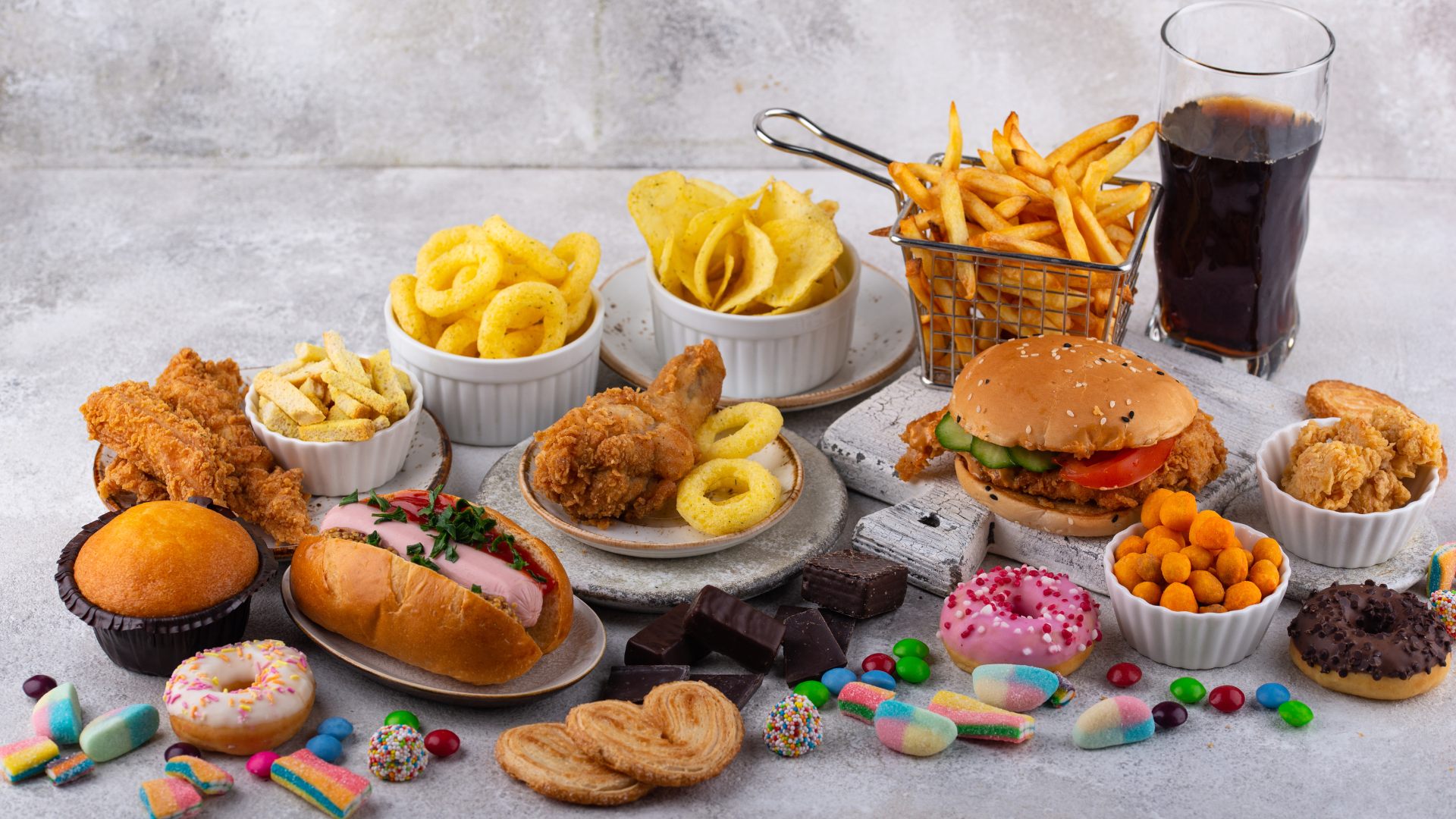
Junk food, despite being widely recognized as unhealthy, continues to attract people for various reasons. These reasons span from biological and psychological factors to cultural influences and marketing tactics. Here’s a comprehensive look at why junk food remains so appealing:
Table of Contents
1. Biological and Chemical Appeal
a. Flavor and Taste
- High in Sugar, Fat, and Salt: Junk food is engineered to have a perfect balance of sugar, fat, and salt, which triggers the brain's reward system. This combination creates a taste experience that is hard to resist.
- Addictive Properties: The intense flavors can lead to an addictive cycle, where the brain craves more to achieve the same pleasure.
b. Brain’s Reward System
- Dopamine Release: Eating junk food triggers the release of dopamine, a neurotransmitter associated with pleasure and reward. This makes eating junk food a pleasurable experience, encouraging repeated consumption.
- Cravings: The brain starts associating junk food with pleasure, leading to cravings even when the body doesn’t need the extra calories.
2. Psychological Factors
a. Convenience and Comfort
- Easy Access: Junk food is readily available, requiring little to no preparation, which appeals to those with busy lifestyles.
- Emotional Eating: People often turn to junk food for comfort during stressful or emotional times, associating it with relief and comfort.
b. Marketing and Advertising
- Targeted Advertising: Junk food companies invest heavily in marketing, often targeting children and young adults with colorful, fun, and catchy advertisements.
- Celebrity Endorsements: Celebrities and influencers often promote junk food, making it more attractive to fans who admire them.
- Brand Loyalty: Through consistent marketing, brands create loyalty among consumers, making certain junk foods a habitual choice.
3. Cultural and Social Influences
a. Social Norms and Habits
- Social Settings: Junk food is often present in social settings like parties, movie nights, or outings, reinforcing its consumption as part of social rituals.
- Childhood Exposure: Many people are introduced to junk food at a young age, creating a nostalgic connection that persists into adulthood.
b. Perception of Value
- Affordability: Junk food is often cheaper than healthier options, making it more accessible, especially for people with limited budgets.
- Perceived Value: The large portion sizes and combo deals give the impression of getting more for your money, which can be appealing.
4. Psychological Manipulation
a. Food Engineering
- Texture and Mouthfeel: Food scientists design junk food to have a pleasing texture, which contributes to the overall sensory experience. The right crunch, melt-in-your-mouth sensation, or chewiness can make food more desirable.
- Visual Appeal: Bright colors and visually appealing packaging grab attention and make junk food more enticing.
b. Portion Size and Overeating
- Portion Distortion: Junk food portions have increased over the years, leading to overeating. The more you eat, the more likely you are to crave these foods in the future.
- Caloric Density: Junk food is often high in calories but low in nutritional value, leading to overconsumption without providing the necessary nutrients, which can perpetuate a cycle of hunger and overeating.
5. Lack of Awareness or Misinformation
a. Nutritional Confusion
- Misleading Labels: Some junk foods are marketed as “healthy” or “natural,” misleading consumers into thinking they are making better choices.
- Lack of Nutritional Education: Many people may not fully understand the long-term health impacts of consuming junk food regularly.
b. Desensitization
- Normalization: Constant exposure to junk food in the media, at home, and in social settings can normalize its consumption, making it harder to recognize its negative effects.
6. The Pleasure of Indulgence
a. Occasional Treat
- Guilt-Free Enjoyment: Many people view junk food as an occasional indulgence, something to be enjoyed without guilt, which can make it more tempting.
- Reward System: Treating oneself with junk food as a reward can reinforce the desire to consume it, especially after a stressful day or as a celebration.
7. Convenience in Modern Lifestyles
a. Busy Schedules
- Time-Saving: In today's fast-paced world, the convenience of grabbing a quick, tasty meal or snack is a significant factor. Junk food fits easily into busy schedules.
- Accessibility: Junk food is available almost everywhere, from vending machines to convenience stores, making it an easy option when time is short.
8. Economic Factors
a. Cost-Effectiveness
- Low Cost: Junk food is often cheaper than fresh, healthy options, making it an attractive choice for those on a budget.
- Economic Disparity: In lower-income areas, access to fresh and healthy food can be limited, leading to a higher reliance on junk food.
Junk food's appeal lies in its carefully engineered taste, convenience, affordability, and effective marketing. While everyone knows it's unhealthy, the combination of biological, psychological, cultural, and economic factors makes it hard to resist. Understanding these influences can help in making more informed food choices, balancing occasional indulgence with a healthier diet.



Leave a Reply
You must be logged in to post a comment.